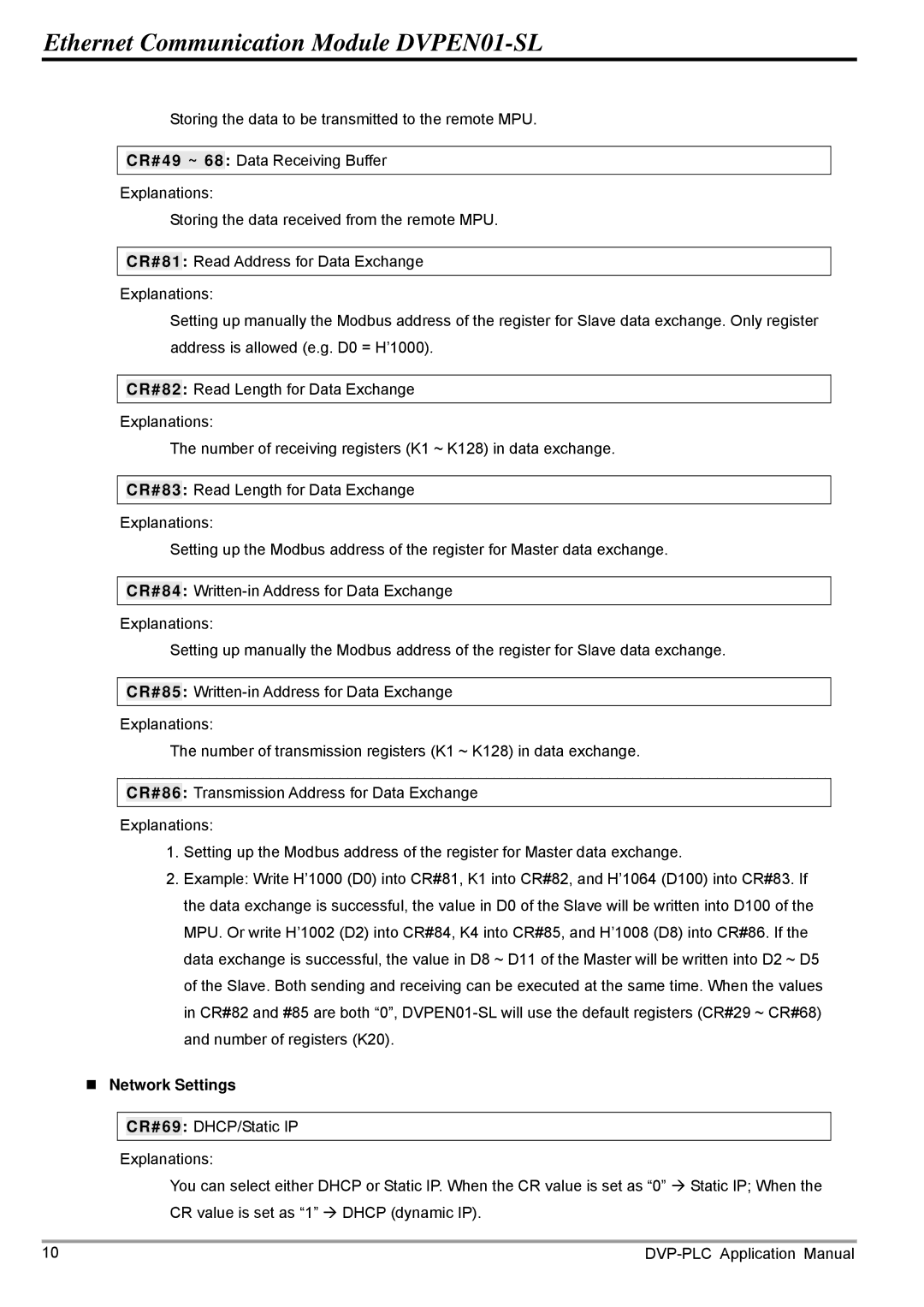
Ethernet Communication Module DVPEN01-SL
Storing the data to be transmitted to the remote MPU.
CR#49 ~ 68: Data Receiving Buffer
Explanations:
Storing the data received from the remote MPU.
CR#81: Read Address for Data Exchange
Explanations:
Setting up manually the Modbus address of the register for Slave data exchange. Only register address is allowed (e.g. D0 = H’1000).
CR#82: Read Length for Data Exchange
Explanations:
The number of receiving registers (K1 ~ K128) in data exchange.
CR#83: Read Length for Data Exchange
Explanations:
Setting up the Modbus address of the register for Master data exchange.
CR#84:
Explanations:
Setting up manually the Modbus address of the register for Slave data exchange.
CR#85:
Explanations:
The number of transmission registers (K1 ~ K128) in data exchange.
CR#86: Transmission Address for Data Exchange
Explanations:
1.Setting up the Modbus address of the register for Master data exchange.
2.Example: Write H’1000 (D0) into CR#81, K1 into CR#82, and H’1064 (D100) into CR#83. If the data exchange is successful, the value in D0 of the Slave will be written into D100 of the MPU. Or write H’1002 (D2) into CR#84, K4 into CR#85, and H’1008 (D8) into CR#86. If the data exchange is successful, the value in D8 ~ D11 of the Master will be written into D2 ~ D5 of the Slave. Both sending and receiving can be executed at the same time. When the values in CR#82 and #85 are both “0”,
Network Settings
CR#69: DHCP/Static IP
Explanations:
You can select either DHCP or Static IP. When the CR value is set as “0” Æ Static IP; When the CR value is set as “1” Æ DHCP (dynamic IP).
10 |
